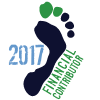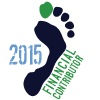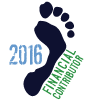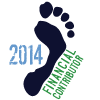Once again, I am willing to make myself look like a complete dolt in my pursuit of learning this barefoot thing. Please bear with me, and provide an answer (or, even just an opinion), if doing so won't make you look as stupid as I feel asking this question:
I've been methodically reading through these forums, hoping to glean tips that will help me make the transition from shod to sans-shod. And something that keeps coming up in people's comments is the concept of running "slowly."
Now, I am not anyone's idea of a fast runner. My last half-marathon (shod) was 2:19:59, during which I walked probably about ten minutes total (it was bloody hot that day). My (shod) long-run pace is around 9:30. On the barefoot runs I've been on, I notice that my pace is somewhere in the 8:30 - 9:00 pace, which, while faster than my (shod) LR pace, is still considered slow by many. I find that as I maintain a 180+ cadence, this is just the pace that I fall into, and it doesn't feel all that fast. If my feet weren't so tender, I feel as if I could continue at this cadence/pace for some miles. But I don't, since the operative word at this point is "not TMTS."
Finally, at the end of my runs, I find that I have beaten up my soles pretty well, and the balls and heels usually have developed a blister or two. So, I know that something is still amiss, likely form, but possibly speed as well.
So, the question is: what is "slow"? Am I running far too fast for my stage of development? and if so, how does one simultaneously develop a fast cadence while running slow? Again, it sure doesn't feel that an 8:30 pace is particularly fast, but given that I am still injuring myself (as in, blisters), should I be slowing down even more?
Sorry, folks, for asking a question that you've likely answered a thousand times before, but I haven't had time to go through the hundreds of pages of forums here on this site yet. I've been reading about the Maffetone method, and have been running with a HR monitor for years, but never at a pace that would keep my heart rate as slow as Dr. Phil suggests. In fact, I'd be barely running at all if I were to observe his 180-age formula. My typical training heart rate is between 136 - 144, which feels moderate to me.
Any suggestions, guidance, or direction is greatly appreciated.
I've been methodically reading through these forums, hoping to glean tips that will help me make the transition from shod to sans-shod. And something that keeps coming up in people's comments is the concept of running "slowly."
Now, I am not anyone's idea of a fast runner. My last half-marathon (shod) was 2:19:59, during which I walked probably about ten minutes total (it was bloody hot that day). My (shod) long-run pace is around 9:30. On the barefoot runs I've been on, I notice that my pace is somewhere in the 8:30 - 9:00 pace, which, while faster than my (shod) LR pace, is still considered slow by many. I find that as I maintain a 180+ cadence, this is just the pace that I fall into, and it doesn't feel all that fast. If my feet weren't so tender, I feel as if I could continue at this cadence/pace for some miles. But I don't, since the operative word at this point is "not TMTS."
Finally, at the end of my runs, I find that I have beaten up my soles pretty well, and the balls and heels usually have developed a blister or two. So, I know that something is still amiss, likely form, but possibly speed as well.
So, the question is: what is "slow"? Am I running far too fast for my stage of development? and if so, how does one simultaneously develop a fast cadence while running slow? Again, it sure doesn't feel that an 8:30 pace is particularly fast, but given that I am still injuring myself (as in, blisters), should I be slowing down even more?
Sorry, folks, for asking a question that you've likely answered a thousand times before, but I haven't had time to go through the hundreds of pages of forums here on this site yet. I've been reading about the Maffetone method, and have been running with a HR monitor for years, but never at a pace that would keep my heart rate as slow as Dr. Phil suggests. In fact, I'd be barely running at all if I were to observe his 180-age formula. My typical training heart rate is between 136 - 144, which feels moderate to me.
Any suggestions, guidance, or direction is greatly appreciated.
































